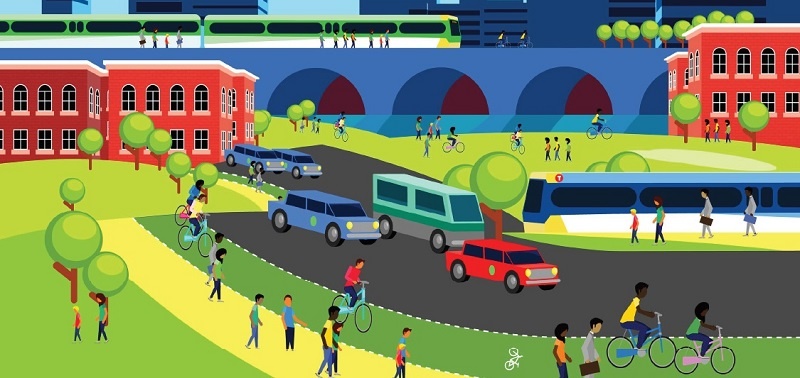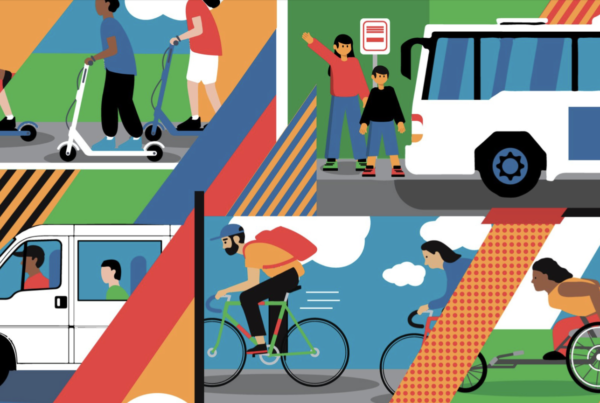Transportation leaders from the Metropolitan Council, Nice Ride Minnesota, The McKnight Foundation and more have joined the national nonprofit Shared-Use Mobility Center (SUMC) to release a Shared Mobility Action Plan for the Twin Cities.
Developed by SUMC with extensive input from regional stakeholders, the plan is designed to help the Twin Cities address several pressing challenges—including looming congestion issues related to population growth, ongoing disparities in transportation access, and intensifying competition with peer cities for workers and economic opportunity—by scaling up shared mobility and public transit.
“Public transit and shared mobility together can create a robust network of choices that help reduce reliance on private autos, cut household transportation costs and lessen carbon emissions,” said Sharon Feigon, Executive Director of SUMC. “The Twin Cities can build on recent and planned transit projects by expanding bikesharing, carsharing, ride-hailing, vanpooling and other first/last mile solutions to help reduce congestion on the region’s roadways and increase affordable, environmentally sound transportation options for all.”
“The Minneapolis-St. Paul region is expected to add more than 800,000 residents by 2040, outpacing the growth rates of many larger metropolitan areas,” said Katie Rodriguez, Transportation Committee Chair of the Metropolitan Council. “To prepare for tomorrow’s opportunities, the Twin Cities must act today to ensure that our region maintains its livability, affordability and freedom of movement.”
At the core of the plan is a mode shift goal that recommends taking advantage of rapidly changing travel behaviors, demand and technology to remove 20,000 private cars from Twin Cities roadways within the next five years and 50,000 within the next decade.
According to SUMC’s calculations, removing 20,000 cars could help cut annual vehicle miles traveled (VMT) by more than 200 million, avoid nearly 80,000 metric tons of annual greenhouse gas emissions, and save residents more than $70 million each year in household transportation costs. SUMC estimates the region could remove 20,000 cars from the road by:
- Attracting 30,000 new daily transit riders
- Sustaining 600 total carshare vehicles
- Adding 800 bikeshare bikes
- Adding 1,000 daily vanpool users
- Adding 2,000 microtransit and ride-splitting users
Once these changes are underway, they can help to grow the ecosystem of options and—when combined with advancements in ride-splitting, policies that support shared, electric autonomous vehicles, and continued investment in transit and supportive land use—could eventually remove 50,000 cars from area roadways.
Taking 50,000 cars off the road would have an even more pronounced effect, reducing annual VMT by 500 million, avoiding nearly 200,000 metric tons of greenhouse gas emissions annually, and saving residents more than $185 million in annual household transportation costs.
In addition to the mode shift targets, the plan includes 10 detailed strategies for action, an analysis of existing shared mobility opportunity in the Twin Cities, suggested funding sources and a prioritized timeline.
At the event, local leaders also announced the creation of a new Shared Mobility Implementation Council—co-chaired by Katie Rodriguez of the Metropolitan Council and Jessica Treat, Executive Director of Transit for Livable Communities/Smart Trips—which will play an ongoing role in helping to implement the strategies featured in the plan and measure progress toward its goals.
A complete copy of the report is available on SUMC’s website here: http://bit.ly/SUMCplanMSP




